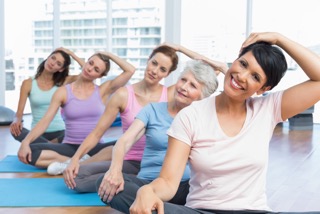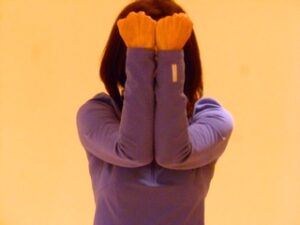Exercise can benefit cancer patients who suffer from the treatment side effect, lymphedema which in short is a collection of fluid. The lymphatic system relies on the movement of muscles to circulate the lymph fluid throughout the body. Personal trainers can help these folks perform exercises safely with good technique to improve flexibility, strength, and function.
The swelling can happen in the arms, legs or torso after the removal of lymph nodes. If you’re working with a cancer survivor who reports unusual swelling, pitting, redness or heaviness refer them to their doctor immediately. Your clients might experience a feeling of tightness, leathery skin texture, and heaviness as a result of lymphedema . Avoid extreme temperatures and sunburns when training. Encourage your client to wear clothing that does not restrict lymph circulation and avoid taking blood pressure on the affected arm.
Visit the National Lymphedema Network’s website to get more information specific to this condition.
Lymphedema Personal Training Considerations
One of the most important things that your client can do to decrease the risk of lymphedema is to keep weight at a good level. The individuals with whom I have worked who had lymphedema, typically see a marked reduction of swelling in conjunction with weight loss. It is also important to learn proper nutrition and to decrease salt intake. Working with the client’s doctor and a nutritionist is advised.
A compression garment or sleeve, which supports the muscle and helps bring the lymphatic fluid to the heart, can be worn while exercising and at other times. Take measurements of the limb to create a baseline and monitor potential swelling.
When exercising, deep breathing is a good way to start. Movement of the diaphragm helps to return lymphatic fluid to the bloodstream. A client with lymphedema should participate in aerobic exercise and flexibility exercise. Strength training can then be added as long as it is performed slowly and progressed slowly.
At first, limit the amount of upper body strengthening exercises. If there is no swelling after the session, you can start to introduce new exercises and increase repetitions. Do not stress an impaired lymphatic system. If your client’s arm hurts or increases in size after exercise they should see a lymphedema specialist.
[sc name=”cancer” ]
Upper Body Exercises for Lymphedema
The following exercises can be performed after receiving medical clearance:
Neck Rotation
Slowly inhale and turn your head over the right shoulder. Hold and slowly exhale, then return your head back to center. Do the same on the left side.
Lateral Neck Stretch
Slowly inhale and tilt your left ear down toward the left shoulder. Hold and slowly exhale, then return your head to center. Do the same on the right side.
Lymphatic Fluid Stimulation Stretch
Raise your arms with your elbows bent at a 90o angle, palms facing forward. Maintaining their height, rotate your arms inward until your elbows meet in front of your chest. Squeeze your hands into fists. Making fists is important as this helps stimulate the flow of lymphatic fluid.
Variation: This can also be done in prayer position, palm to palm at chest level. Inhale, then exhale as you press the palms together for 5 seconds.
Shoulder Flexion
Starting with your arms straight down at your sides, slowly raise one arm in front of the body, palm facing the floor. Try to raise the arm 180o, but never to the point of pain. Slowly lower the arm back to your side. Repeat with the opposite arm. Repeat on each side, increasing your range of motion with each stretch. You may not be able to raise the arm 180o at first, but slowly build your range of motion as you stretch on a regular basis. You should feel tension, but not pain.
Shoulder Flexion with Fist Pump
Perform the shoulder flexion stretch with both arms simultaneously, and when your arms are raised to their highest position, gently squeeze your hands to make fists. Release the fists and lower your arms back to your sides. Performing the fist pump encourages the flow of lymphatic fluid.
Alternating Reach
Reach up as high overhead as you can with one arm, while holding the opposite arm at your waist, hand closed in a fist. Reverse to reach up with the opposite arm. Repeat the alternating reach, trying to stretch a little bit farther with every reach.
Variation: Perform the stretch reaching up as high overhead as you can with one arm, while the opposite arm reaches toward the floor.
Forearm Rotation
Reach your arms straight out in front of you, parallel to the floor with your palms facing the floor. Slowly rotate your forearms outward until your palms are facing the ceiling. Slowly rotate your forearms inward until your palms are back in the starting position facing the floor.
Variation: Perform the Forearm Rotation with your arms out to the sides. Afterward, inhale and make fists, then exhale and slowly open the hands.
Have you worked with a client coping with any of these issues? Share your story with us here.
If you’re an NFPT Trainer, join the community group.








